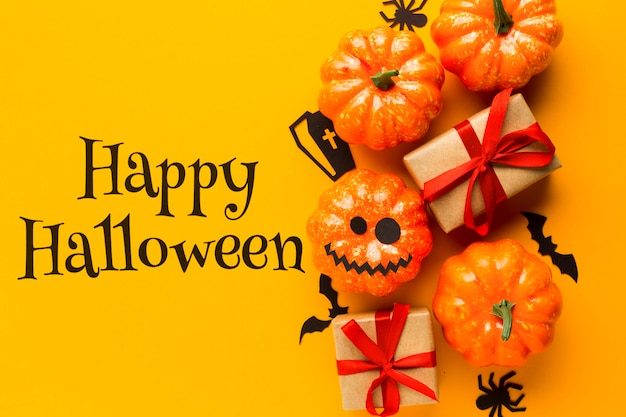History of Halloween All You Need to Know about it

All Hallows’ Eve, often known as Halloween, is the night before All Saints’ (or All Hallows’) Day and is a holiday celebrated on October 31. The event kicks off Allhallowtide, a three-day period that ends with All Souls’ Day, and celebrates the day before the Western Christian feast of All Saints. The majority of North America and much of Europe do not observe Halloween as a religious holiday. The day after Halloween, Monday, October 31, 2022.
Also Read:- Best Halloween Events In London 2022
Halloween
Samhain, a festival celebrated by the Celts of ancient Britain and Ireland, is where Halloween got its start. The new year was thought to start on the day that modern calendars would place as November 1. When the herds were brought in from pasture and land tenures were renewed on that day, it was regarded as the start of the winter season. The dead were thought to visit their houses during the Samhain celebration and those who passed away over the year were thought to travel to the afterlife. People would build bonfires on hilltops to scare away evil spirits and relight their hearth fires for the winter. They would also occasionally dress strangely to avoid being identified by the ghosts they believed to be around. These practices led to the association of witches, hobgoblins, fairies, and demons with the day. Additionally, it was considered favourable during this time to use divination to predict things like marriage, health, and even death. When the Romans subdued the Celts in the first century CE, they established their own festivals to honour the harvest goddess Pomona and the passing of the dead, Feralia.
All Saints’ Day was first observed on May 13 by Pope Boniface IV in the 7th century CE. The next century, it was possibly shifted to November 1 in an effort to replace the pagan event with a Christian celebration. Halloween was created as a holy or hallowed eve on the night before All Saints’ Day. The secular and holy days were intermingled by the end of the Middle Ages. The Protestant Reformation ultimately ended the religious celebration, however Halloween continued to be observed as a secular holiday, especially in Britain. The celebration of Halloween was mostly outlawed among the early American colonies along with other celebrations, until in the 1800s harvest festivals with Halloween-related aspects emerged. Beginning in the middle of the 19th century, a major influx of immigrants—including the Irish—came to the United States. As a result, Halloween became one of the main holidays in the country in the 20th century, especially among kids.
Halloween has a variety of traditions because it is a secular celebration. One is the act of playing pranks, which are mostly harmless. Trick-or-treaters go from home to house with the threat that they will pull a trick if they do not receive a treat, usually candy. Trick-or-treaters are considered to have originated from the British practice of enabling the impoverished to beg for food, dubbed “soul cakes.” Bobbing for apples is a popular pastime at Halloween celebrations; it may have originated with the Roman holiday of Pomona. The celebration of the event includes frightening characters like ghosts, witches, and vampires in addition to skeletons and black cats. A turnip that has been hollowed out, painted with a demonic face, and burned inside with a candle is another emblem. The United Nations Children’s Fund (UNICEF) has been attempting to incorporate the collection of funds for its activities into Halloween since the middle of the 20th century.
Halloween FAQs
Describe Halloween.
Halloween is a holiday that ushers in Allhallowtide by falling on the day before the Western Christian feast of All Saints, also known as All Hallows. Halloween is mostly a secular holiday that is celebrated across much of North America and Europe.
When is Halloween?
October 31 is designated as Halloween.
Where did Halloween come from?
The pre-Christian festival Samhain, which was observed in early mediaeval Ireland around November 1 as the start of a new year, may have influenced Halloween in some small way. All Saints’ Day on November 1 and All Souls’ Day on November 2 are two Christian feasts of the dead that appear to have had a major influence on its development. By the ninth century, Halloween was being observed across Western Christendom on October 31 as All Hallows’ Eve.
How is Halloween celebrated?
Trick-or-treating, costumes, parties, and pranks are all part of the Halloween celebration. Frequently, people carve faces into pumpkins.
How did Halloween become popular in the United States?
In the 19th century, immigrants from Europe helped promote Halloween by bringing their traditions to the country. Halloween had evolved into one of the major holidays in the United States by the 20th century, particularly among kids.
Would Halloween be safer for kids if it fell on a Saturday?
For safety purposes, some people prefer Halloween to be on a Saturday. Others, however, point out that as Halloween is not a federal holiday, the American federal government is powerless to implement such a change.








